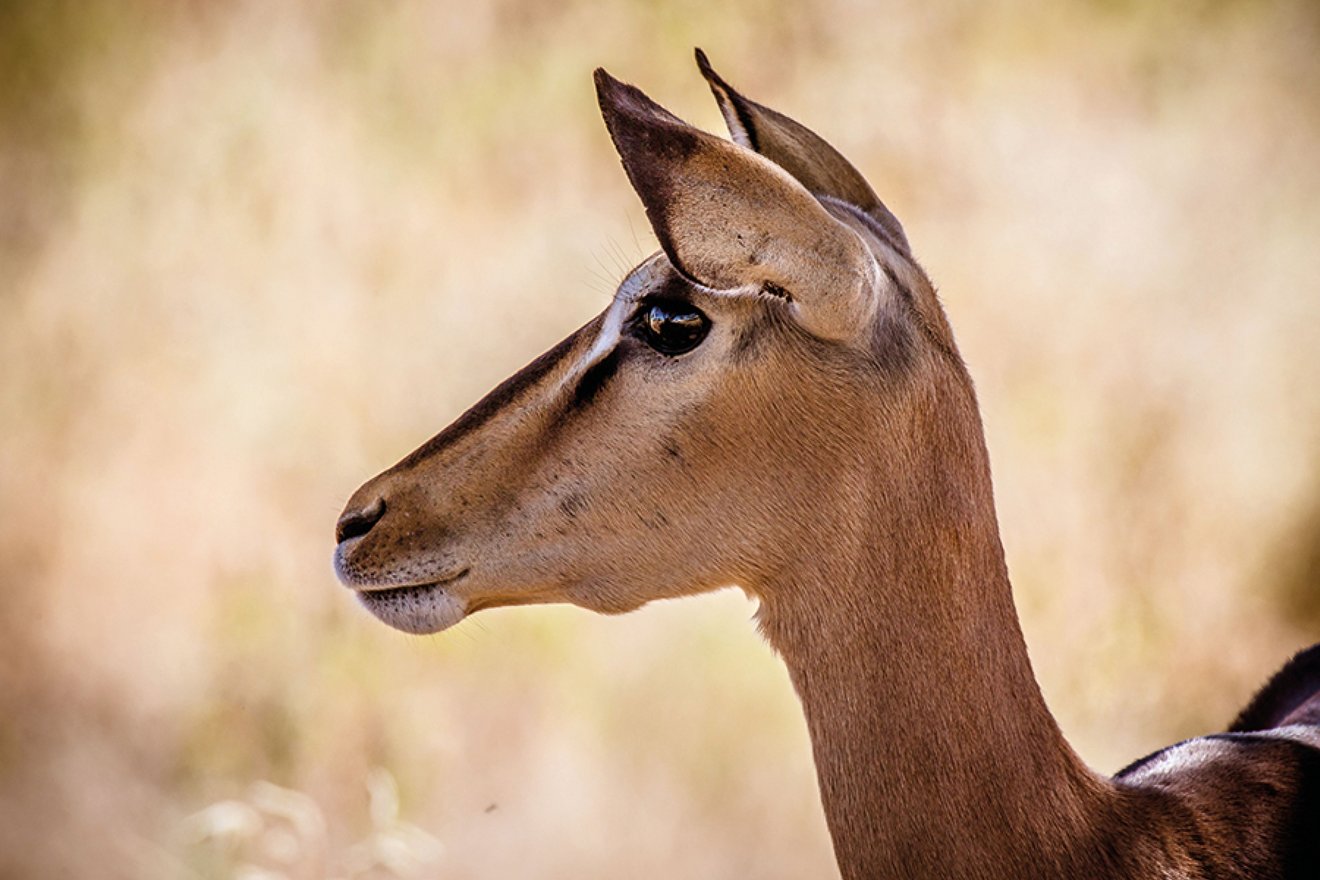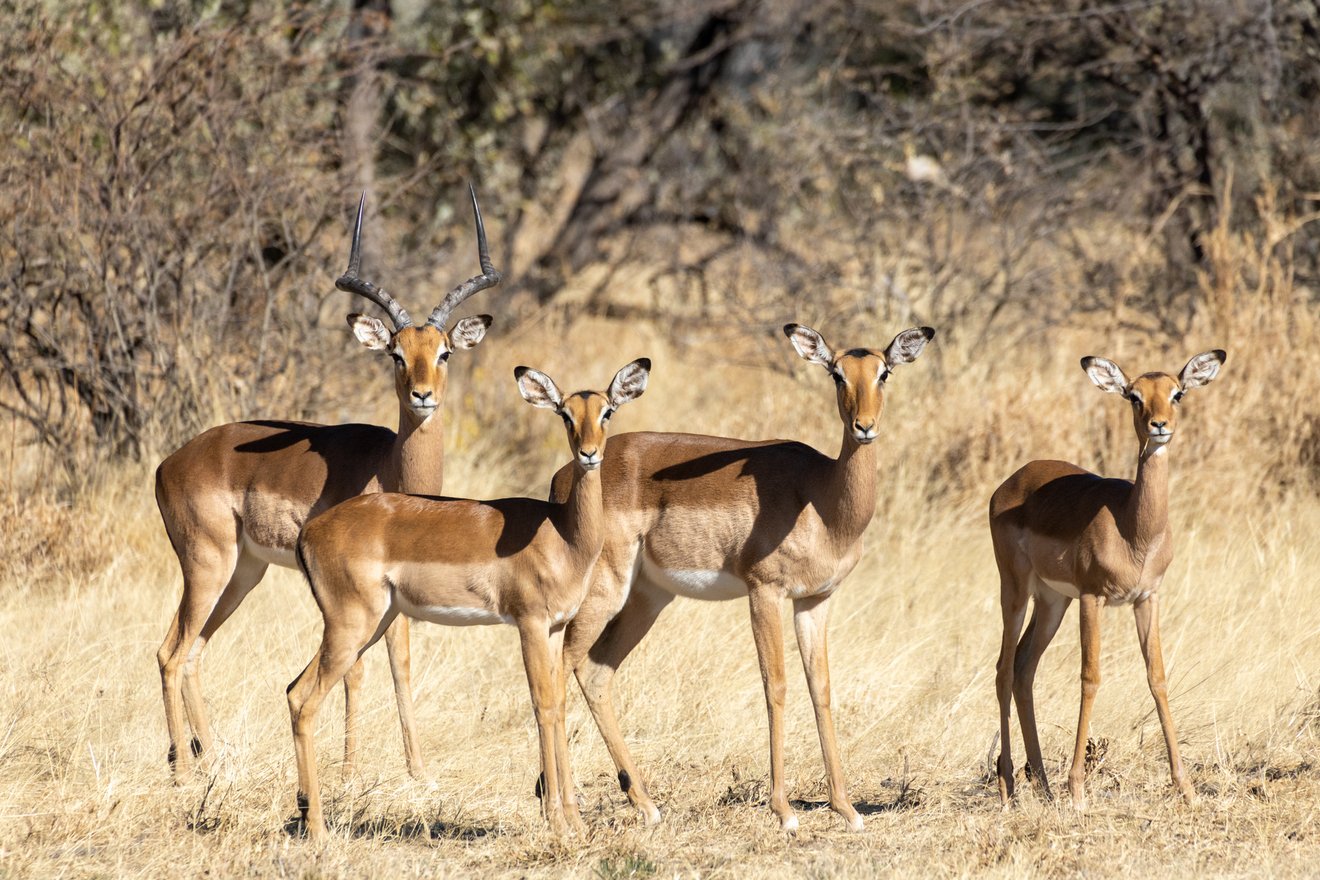Impala antelopes are among the most well-known and widely distributed antelopes in Africa. They can be found in almost all dry savannah areas with grass, bush, and tree cover. These slender animals impress with speeds of up to 60 miles per hour and incredible agility. Even more famous is their immense jumping ability: With leaps of up to 10 meters in length and 3 meters in height, impalas move effortlessly through heavily overgrown bushland. Their agility helps them escape predators such as lions, cheetahs, leopards, and wild dogs.
Common Impala
BLACK-FOOTED IMPALA
GUIDE KNOWLEDGE IMPALA
Impalas are medium-sized antelopes found in East and South Africa and are numerically abundant at KAMBAKU. They have reddish-brown fur, a white belly, and distinctive black markings on their ears, face, and tail. Impalas exhibit sexual dimorphism, with males being larger and heavier than females. Male impalas, or rams, weigh between 40 and 75 kilograms, while female impalas, or ewes, weigh between 30 and 50 kilograms. Both genders have lyre-shaped horns, which can grow up to 90 centimeters long in males and serve for defense and territorial battles.
These elegant jumpers are selective grazers, primarily feeding on grasses, herbs, leaves, and shoots. Thanks to this fairly versatile diet, they can survive in various habitats and play an important role in controlling plant growth in the African ecosystem. They prefer habitats near water sources but can also go for extended periods without water by obtaining the required moisture from their food.
The Black-Footed Impala exhibits a behavior known as "stotting," where they leap with stiff legs vertically into the air to confuse predators and demonstrate their strength.
And a fun fact to wrap up: The next time you're out in the bush with our guides, take a look at the rear end of these slender beauties. With a bit of imagination, you can see a dark "M" on their hindquarters and tail. That's why they are also referred to as the "fast food of the savanna."




